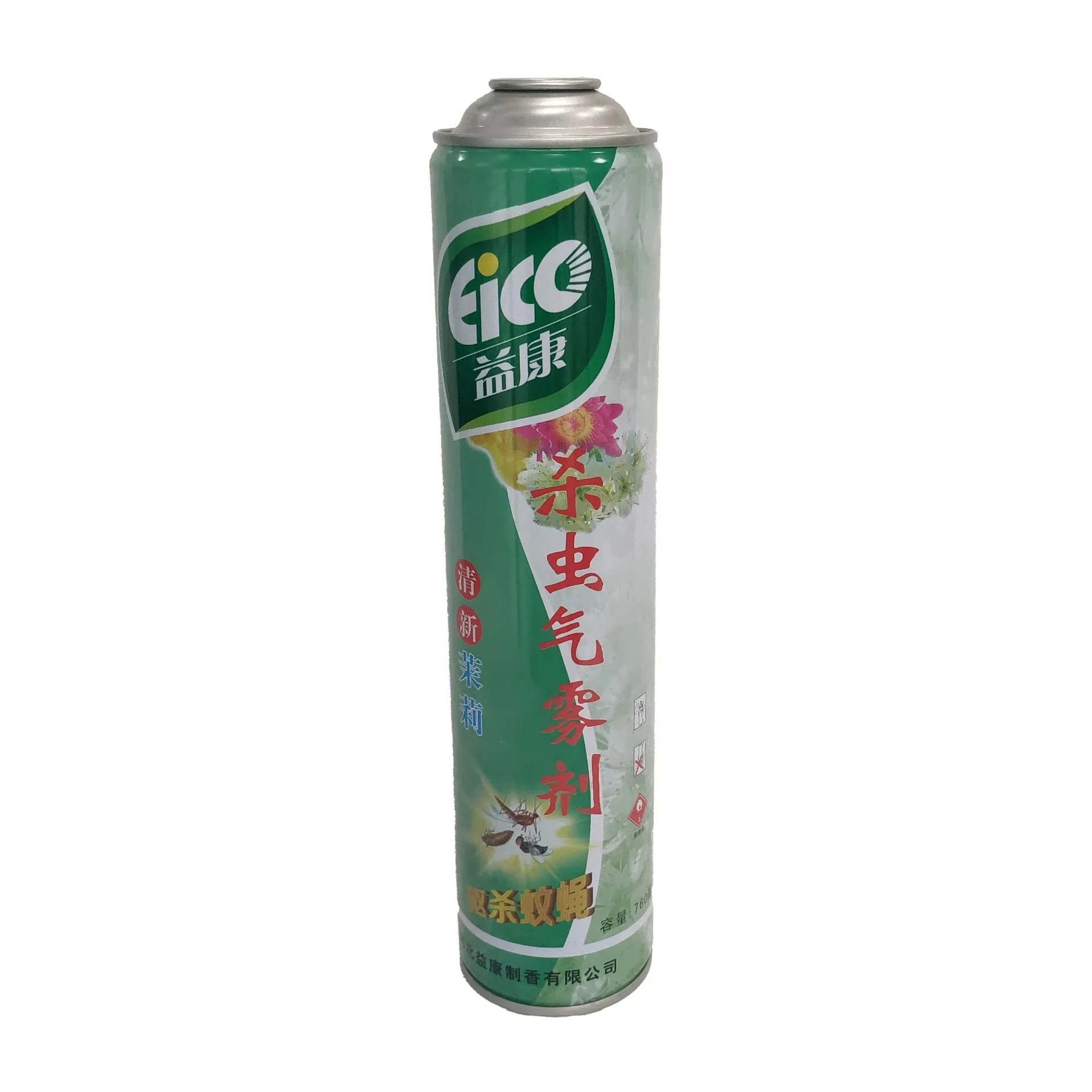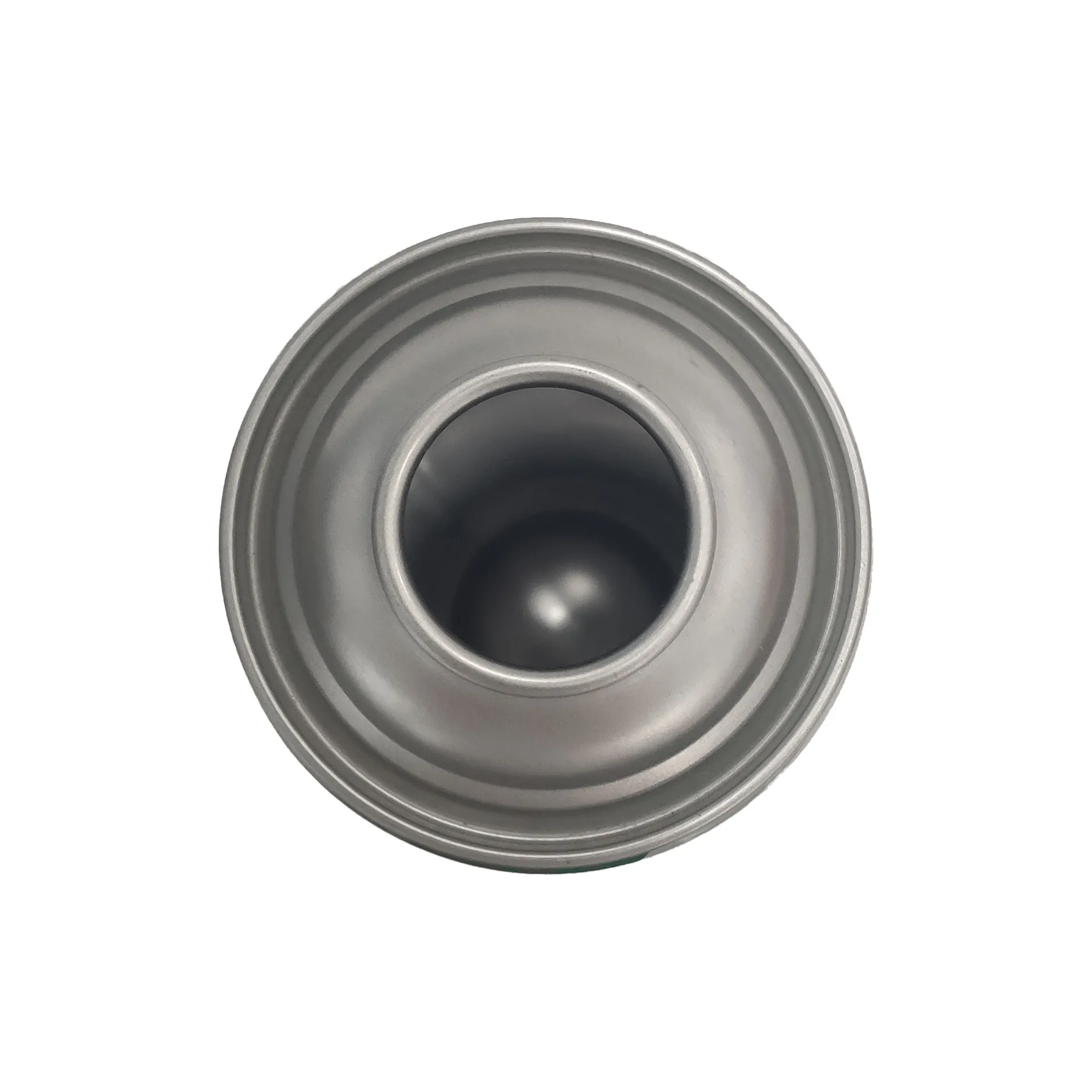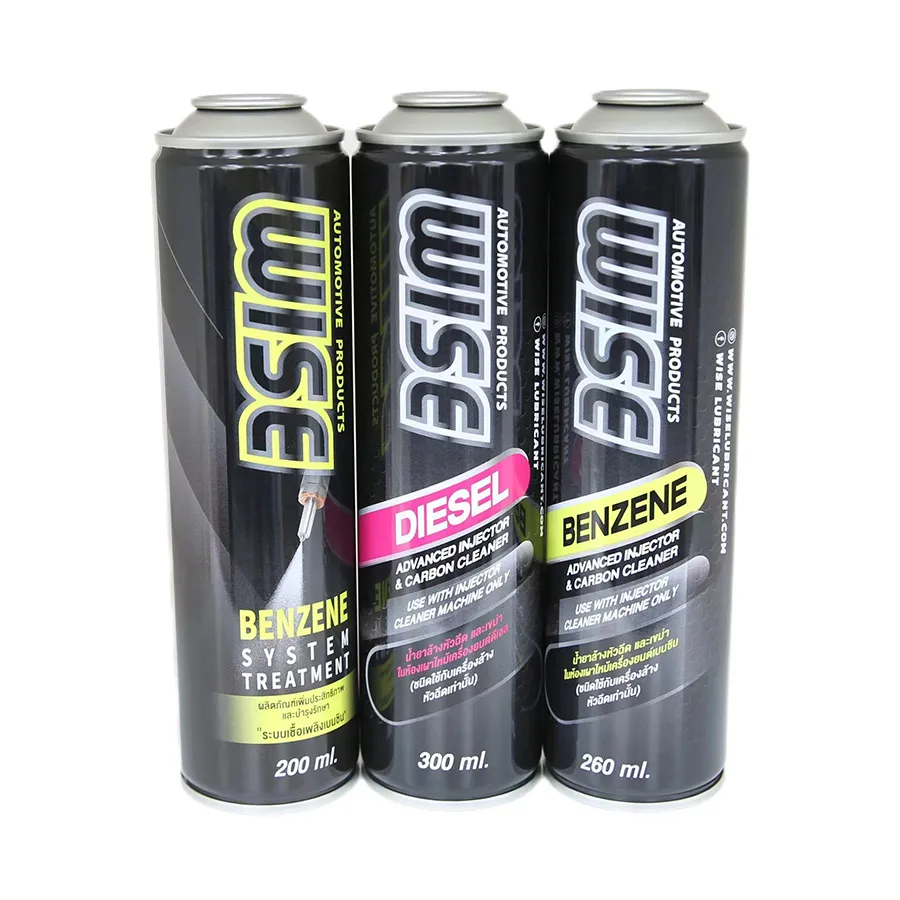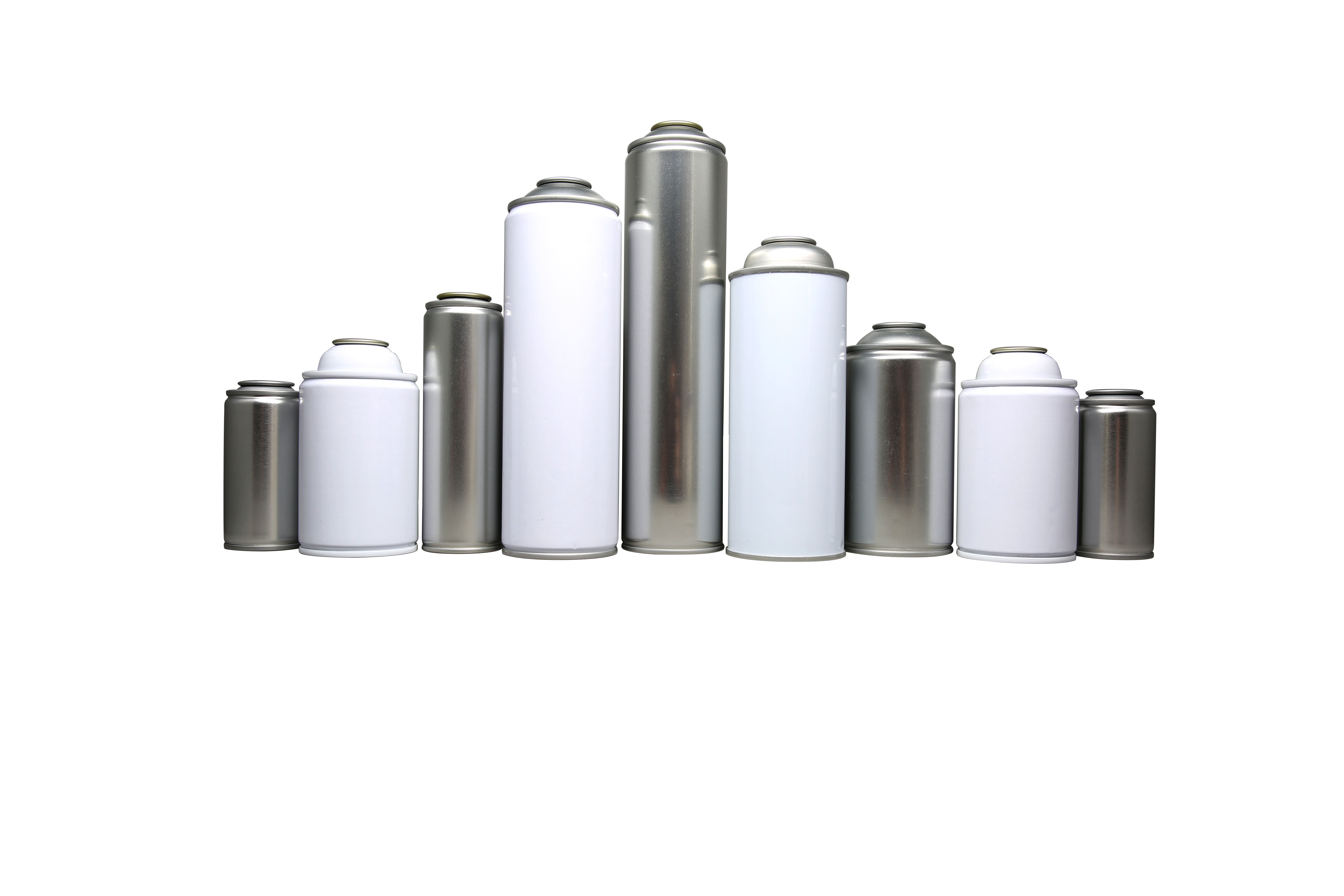Tinplate aerosol cans are widely used metal packaging containers, essential for cosmetics, household cleaning products, air fresheners, paint sprays, and even industrial pesticides and lubricants.
Due to their excellent sealing properties, strong pressure resistance, stable storage, and ease of use, tinplate aerosol cans are an ideal packaging format for a variety of liquid and gaseous products. However, consumers and industrial operators often face a core challenge during use: how to accurately determine if a tinplate aerosol can is empty?
Accurately determining whether an aerosol can is empty not only impacts the user experience but also raises concerns about waste disposal and safety risks. If mistakenly identified as empty, the remaining propellant inside the can could explode due to high temperatures, impact, or friction, creating unforeseen dangers.
This article will provide a detailed explanation of how to determine if a tinplate aerosol can is empty, focusing on structural analysis, internal filling material characteristics, identification methods, operating techniques, and safety precautions.

What is a tinplate aerosol can?
Tinplate aerosol cans are sealed metal containers made from tinplate (tin-coated steel). The tin coating on the tinplate surface provides excellent corrosion resistance, preventing corrosion from air, moisture, and other chemicals, while also ensuring the can's mechanical strength during use and transportation.
• Advantages of Tinplate: In addition to corrosion protection, the tin coating also enhances the metal's surface gloss, making the aerosol can more aesthetically pleasing.
• Material Thickness and Pressure Resistance: Depending on the can's capacity and intended use, the thickness of the tinplate is typically between 0.2 and 0.35 mm, sufficient to withstand internal pressure and transport vibrations.
What is the internal structure of a tinplate aerosol can?
A tinplate aerosol can generally consists of the following main components:
• Body: Made of rolled tinplate, it forms a cylindrical structure that stores the contents and withstands internal pressure.
• Bottom and Top: Sealed to the body using a crimping technique, they ensure a completely sealed interior.
• Valve and nozzle: Installed on the top of the can, the valve is pressed to release the contents, while also controlling the spray volume and pattern.
• Internal filling: Mainly includes the propellant and the main liquid or gas product. The propellant can be liquefied petroleum gas, carbon dioxide, or nitrogen, among others.
The airtight nature of this structure makes it impossible to directly determine whether the can is empty by appearance. Therefore, the method for determining whether a can is empty requires a combination of physical, chemical, and operational experience.

Why is it important to determine whether a tinplate aerosol can is empty?
1. Safety Risks
Even if the liquid in the can has been largely sprayed out, a small amount of propellant may still remain. If an aerosol can is mistakenly treated at high temperatures or discarded carelessly, the residual gas may explode under high temperatures or impact. Residual pressure inside a tinplate aerosol can is not negligible, and any negligence can lead to accidents.
2. User Experience
In daily use, if consumers cannot accurately determine whether the aerosol can is empty, they may not be able to use the spray function at a critical moment, such as when they suddenly run out of cosmetics or insecticide. This can cause operational inconvenience and product waste.
3. Disposal
Many regions have specific regulations for the disposal of tinplate aerosol cans. Empty and unempty cans require different treatment methods: unempty cans require specialized handling to release residual pressure, while empty cans can be recycled as ordinary metal. Inaccurate identification can lead to environmental or safety issues.
Can tinplate aerosol cans be identified by appearance?
1. Methods and Limitations of Visual Inspection
It is nearly impossible to determine whether a tinplate aerosol can is empty simply by looking at the can's exterior. Even if the can's contents have been completely used, the metal can retains its original shape, without noticeable deformation or dents.
• Label Reference: Some product labels display the capacity or usage amount, but due to variations in frequency of use, ambient temperature, and spraying method, this information is only a guide and cannot accurately determine the remaining amount.
• Can Deformation: Localized dents may occur when the can is subjected to external forces or manufacturing defects, but this is not a reliable indicator.
Therefore, visual inspection should only serve as a preliminary guide and must be combined with other methods for accurate identification.

Determining Whether a Tinplate Aerosol Can is Empty by Weight
1. Principle of the Weighing Method
Each tinplate aerosol can has its own tare weight, or empty can weight. After the can is filled with contents and propellant, its weight increases significantly. With use, the weight gradually decreases. When the weight approaches the empty can tare weight, the contents are nearly depleted.
Steps
• Recording Tare Weight: You can obtain a reference weight from an empty can of the same model or from the product instructions.
• Measuring Total Weight: Use an electronic scale to measure the current weight of the aerosol can.
• Comparative Analysis: If the weight approaches the empty can tare weight, the contents are nearly depleted.
Advantages and Limitations
• Advantages: Weighing is intuitive, professional, and easy to quantify, making it one of the primary methods for determining whether the can is empty.
• Limitations: A small amount of propellant, especially liquefied gas, may remain in the can. Even when the weight is close to empty, residual pressure still poses a risk. Therefore, weighing cannot be used solely as a safety assessment method.
Determining Empty by Sound
1. Shake and Listen Method
Shake the tinplate aerosol can and listen carefully for the sound of the liquid sloshing inside:
• If there is a sloshing sound, the contents have not yet been sprayed out.
• No sound: The can is likely nearly empty, but there may still be residual gas.
Notes
• Small amount of residual liquid: A small amount of residual liquid may not produce a sound, but there is still potential for spraying.
• Propellant state: If the propellant is mostly gaseous, it cannot be determined by sound.
• External noise: Noisy environments can easily interfere with judgment, so perform this test in a quiet environment.
The sound method should only be used as a supplementary tool and should not be relied upon completely.
Determining by Nozzle Test
1. Actual Spray Method
Directly press the nozzle of the tinplate aerosol can:
• If the contents spray out: There is still liquid or gas propellant in the can.
• No contents spray out: The can may be nearly empty, but be aware that residual pressure may still exist.
Limitations and Risks
• Nozzle Clog: The contents may dry out and clog the nozzle, preventing the can from dispensing even if there is liquid inside.
• Residual Pressure: Even if no liquid can be dispensed, residual gas may cause the can to be pressurized, posing a risk of rupture.
Nozzle testing can be used as an auxiliary measure, but should not be the sole basis.

Professional Methods and Industrial Testing
1. Pressure Testing
Under laboratory or industrial conditions, a pressure measuring device can be used to measure the residual pressure inside the can. If the pressure is close to atmospheric pressure, the can is almost empty.
2. High-End Industrial Testing
• Ultrasonic Testing: Uses sound waves to detect residual liquid inside and determine the remaining liquid amount.
• X-ray or CT Scan: Can display the distribution of liquid and gas inside the can and is suitable for high-precision testing.
While these methods are accurate, they are costly and unsuitable for daily use, limiting them to industrial quality inspection.
Comprehensive Recommendations for Determining Whether a Tinplate Aerosol Can is Empty
1. Weighing and Comparison: The most reliable daily method
2. Shaking and Listening: A helpful method for determining residual liquid
3. Nozzle Test: Confirm that the contents can be sprayed out
• Safe Operation: Even if the can is deemed empty, avoid exposure to high temperatures, impact, and open flames.
• Safety Reminder: Even when tinplate aerosol cans are nearly empty, they may still contain a small amount of residual pressure. When discarding or disposing of them, follow the instructions and environmental protection regulations to avoid accidents.
What industries use Dekai’s metal packaging products?
Dekai’s tinplate cans, aerosol packaging, and metal lids are widely used in food, cosmetics, household products, and industrial applications. As a China manufacturer and supplier, we deliver wholesale metal packaging at low prices while maintaining premium quality.
Our factory sales model helps international buyers save on costs by purchasing directly from the source. We also provide customized designs, brand printing, and promotional discounts for large orders.

